Hi all, Ada here (perhaps better-known as “Freyja,” if you’re more familiar with the FAB Discord); I’ll be migrating my monthly “State of the Market” articles from my personal site over to the Rathe Times starting at the end of March. However, since we’re in the middle of the month, I’ve got something a little bit different for you today. This piece is designed as a primer for people looking to get into the financial end of Flesh and Blood, be that as investors, collectors, or even just as players who want to more efficiently use their hobby funds. I’m going to start with a glossary of terms you’re likely to hear when looking at Flesh and Blood through a financial lens, and then we’ll go over some of the basics of cardboard finance. For those of you who have been actively engaged with the Flesh and Blood market for months and feel like you know what you’re doing, I’ll see you in a few weeks for the “State of the Market,” but for those of you who are new and would like a structured introduction, let’s get started!
A Glossary for Collecting FaB
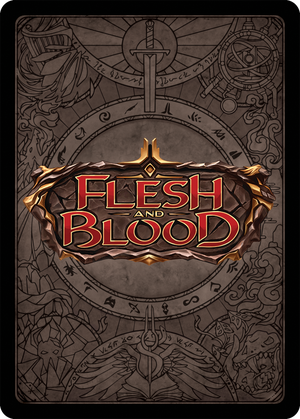
Like most hobbies, Flesh and Blood uses a variety of specialized vocabulary. Some of it is unique to the game, and other bits are borrowed from the world of finance or collectible card games generally. The list below is arranged alphabetically and attempts to collect many of the most commonly used terms you’ll encounter. You’ll probably note that there are a ton of abbreviation and acronyms on the list. For these entries, the terms that these strings of letters represent are presented in italics, and their definitions follow.
AI: Alpha Investments
AI is a YouTube channel run by Rudy that was originally launched to discuss Magic the Gathering as an investment. LSS has a special relationship with Rudy, who began promoting the game to his viewers and patrons before it took off in the US. Rudy sells FAB product directly to his patrons, and his sales have often included promos such as unique playmats designed by LSS specifically for Alpha Investments or cards previously only available in Armory kits. The YouTube channel also puts out regular video content related to the financial end of Flesh and Blood.
ARC: Arcane Rising
This is the second set released for Flesh and Blood.
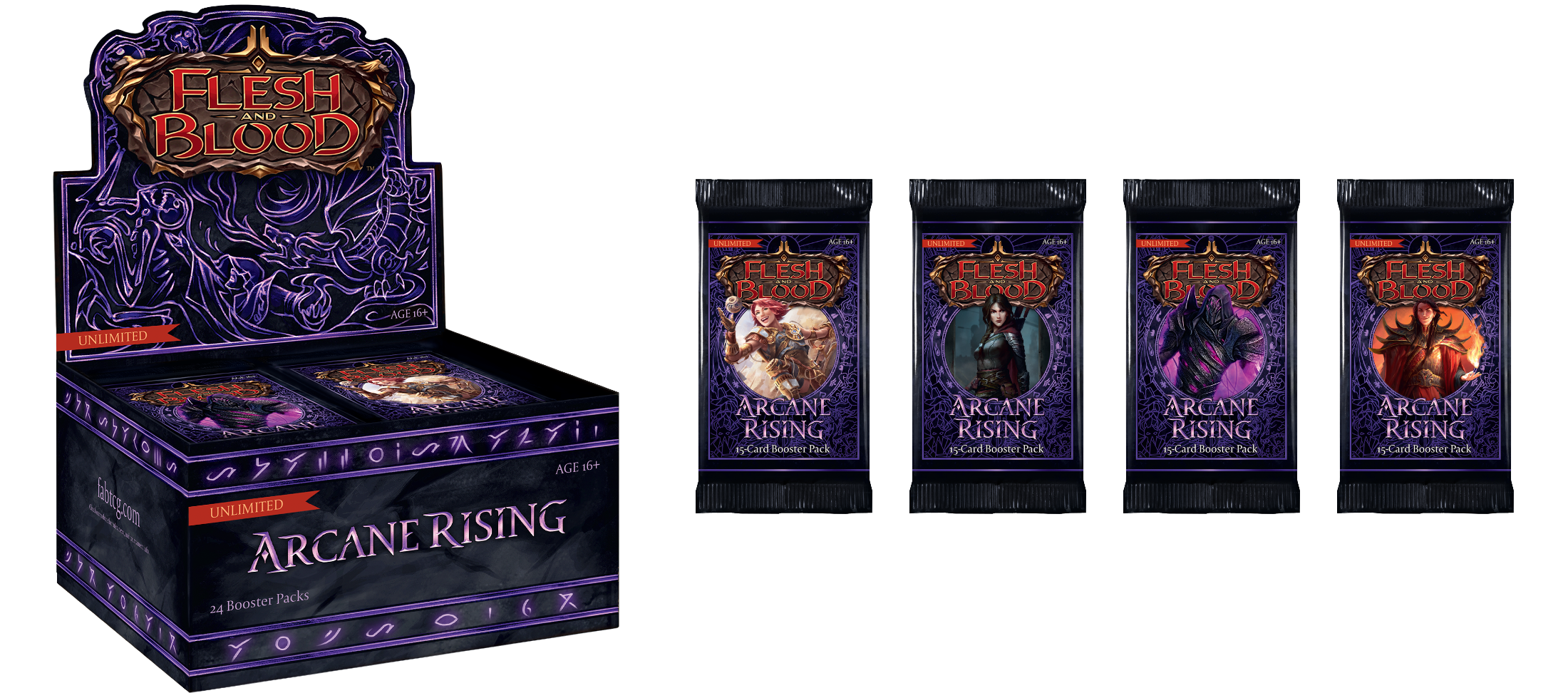
Alpha Edition
Alternatively Alpha, this designation is specifically given to the first edition printing of Welcome to Rathe. The first printings of all other sets are referred to as “first edition.”
Arbitrage
The act of buying a commodity in one market to sell in another as a way of exploiting differences in price. Strictly speaking, the buying and selling should be done at the same time, but in CCGs people usually stretch the definition to include ordering cards and then selling them as soon as they’re in hand. In FAB this usually means buying from one country to sell in another.
BaB: Buy-a-Box
BaBs are promotional cards given out by some retailers along with pre-orders of sealed boxes. They’re usually limited to first edition boxes, but there have been exceptions where they were given out with unlimited edition boxes.
BGS: Beckett Grading Services
Along with PSA, they are one of the two primary card grading services commonly used for FAB. They are notable for giving subgrades to individual aspects of cards and for giving half grades to cards (ex. 9.5).
Black Label
A BGS-rated card that has 10s in all four subgrades is called a “black label” due to the literal black label that is applied to the case. These are exceptionally rare and command a very high premium.
CC: Classic Constructed
CC is the primary competitive format for FAB, though Blitz and Limited are also valid Organized Play formats.
CCG: Collectable card game
CCGs is a term that describes games like Flesh and Blood where cards are purchased in randomized or semi-randomized packs. It’s interchangeable with “TCG” and is the older of the two terms used to describe this sort of game.
CF: Cold foil
Cold foiling is the premiere special treatment for Flesh and Blood cards. Currently it is only used on promotional cards and select cards (mostly, but not always, equipment) in the first edition of a given set.
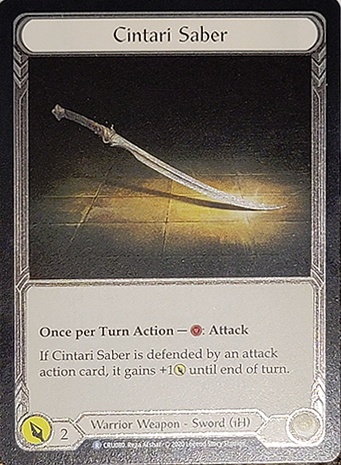
CFB: ChannelFireball
CFB is a large store that produces digital content and runs events; they’re primarily known for their activity relating to Magic: the Gathering. CFB is notable for establishing an early partnership with LSS that often gives them access to promotional cards to distribute alongside their various bundles.
Crinkle
Sometimes also rendered as “crinkle crinkle,” “the crinkles,” and numerous other variations, this slang term refers to both the act of opening sealed product and the temptation to do so. It’s fairly common to see people posting pictures of sealed product and talking about feeling the urge to crinkle.
CRU: Crucible of War
CRU is the third set released for Flesh and Blood. It is notably the first supplemental set released. It is sometimes, incorrectly, referred to as “CoW.”
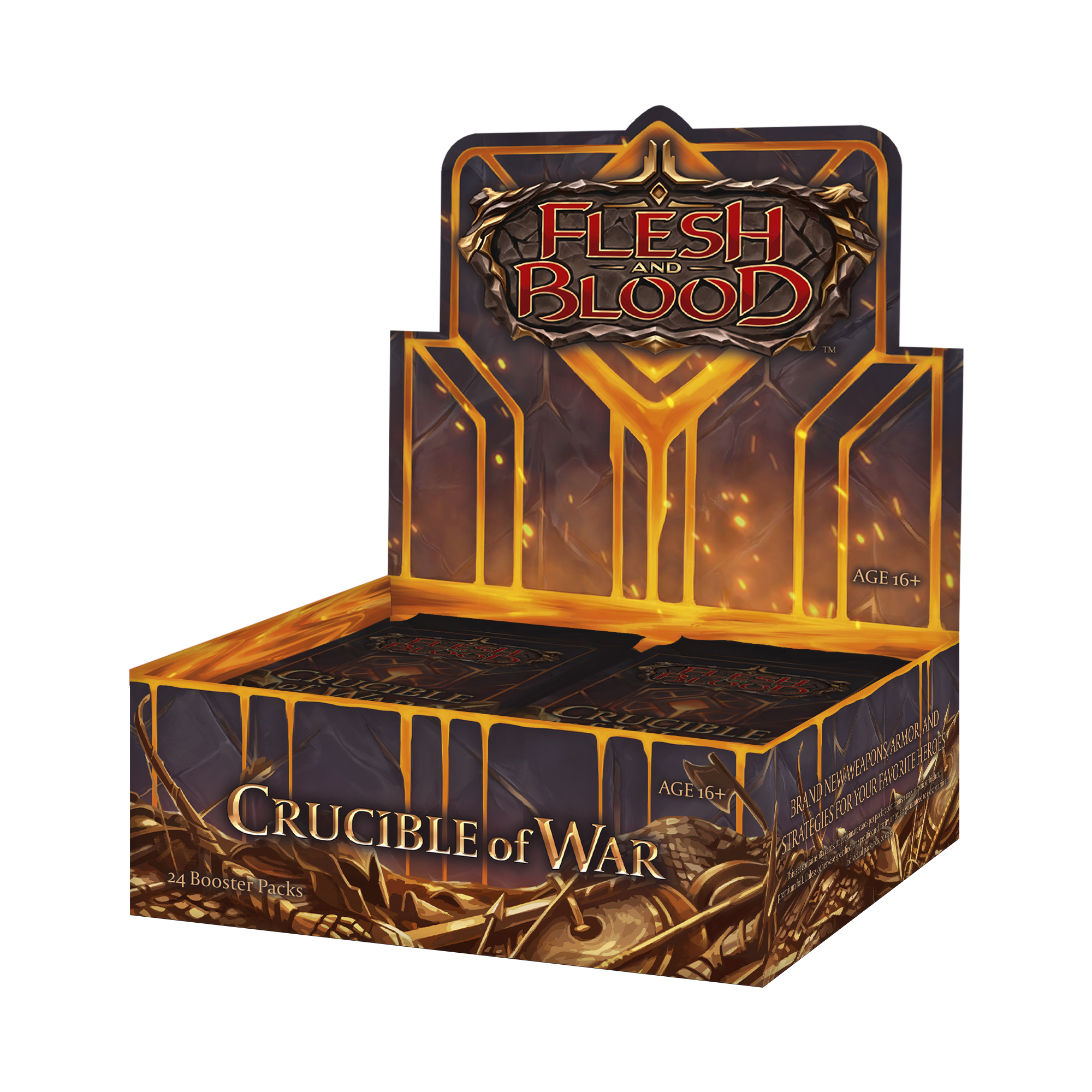
EV: Expected value
EV is the average total value of the single cards that one would expect to obtain by opening a sealed product.
FAB: Flesh and Blood
FAB is the game we’re talking about.
First Edition
Also represented as “1st ed.” or “first ed.,” first edition describes the first release of a new Flesh and Blood set. First edition product is currently the only version of sealed product that can contain cold foils, and as such, it carries a premium.
Flip
“Flipping” describes the act of buying a product and reselling it shortly thereafter for profit.
GF: Gold foil
Gold foiling is a premium treatment that is currently reserved for prize cards from specific tournaments. These are exceptionally hard to get and valuable.
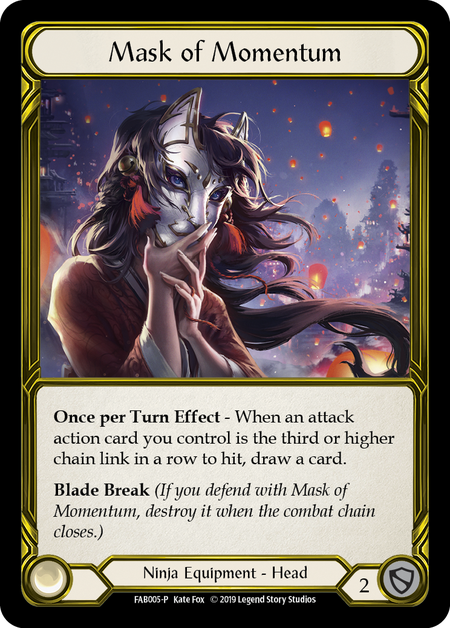
Gold Label
A BGS-rated card that has 9.5s or 10s in all four subgrades, named for the gold-colored labels that are applied to their cases. These are quite rare and carry a significant premium.
Grading
Cards are graded when they’re sent to a specialized company to evaluate them on their condition. Highly graded cards can sell for dramatically more than ungraded copies of the same card. Currently, the two main companies that are being used to grade Flesh and Blood cards are PSA and BGS.
Investable
An item is generally considered to be investable if there is a probable path to it increasing in value in a meaningful way. A first edition cold foil is likely to increase in value over time; a random unlimited edition common is unlikely to meaningfully increase in value.
Liquidity
Refers to how easily an asset can be converted to cash. A gold foil card may have a high value but a low liquidity because the market for it is niche and it is very expensive, whereas a rainbow foil Legendary may have modest value but high liquidity due to the significant demand for these cards.
LSS: Legend Story Studios
LSS is the company that makes Flesh and Blood.
MAP: Minimum Advertised Price
In select markets, LSS imposes a lower floor on how much stores can sell sealed product for during the initial months following a set’s release. For the US market, one of the markets where MAP applies, this is about $76 a box.
MON: Monarch
MON is the upcoming set for FAB. It will be the fourth set released.
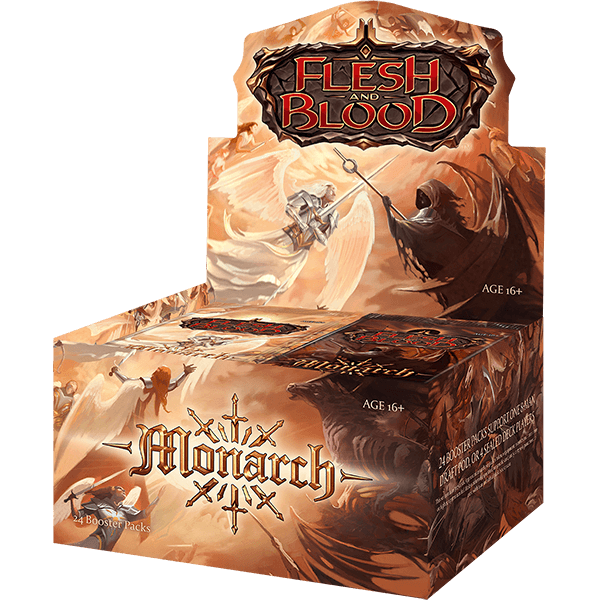
NF: Non-foil
Non-foil describes the “normal” cards that account for most of the cards in a sealed pack.
OP: Organized Play
OP events are official events endorsed by LSS. These include more casual events like Armory nights, as well as highly competitive events like Callings and Nationals (these high-level events are known as Premier Organized Play). These events often award promotional and/or prize cards to participants and/or top finishers.
Promos
Promotional cards given out through various means, these cards are not able to be found in booster packs or represent special variants of cards distinct from the versions found in packs.
Pringles
“Pringling” is a slang reference to cards, usually foils, curling to resemble a Pringles potato chip. It’s used derogatorily to indicate that cards that have been poorly manufactured and/or improperly stored.
Print Run
The number of cards in a set or the copies of a specific card or class of rarities within a set. Print runs are important for determining the relative scarcity of various products, which significantly impacts their value.
PSA: Professional Sports Authenticator
Along with BGS, they are one of the two primary card grading services commonly used for FAB.
Raw
The term “raw” describe a card that has not been graded.
RF: Rainbow foil
For most cards, this is the more premium treatment available. Cards that appear as cold foils in the first edition of a set appear as RFs in unlimited editions.
Rudy
Rudy is the owner of Alpha Investments. Due to the size of his audience relative to the size of the FAB playerbase, Rudy has a significant ability to influence the market, and his videos discussing FAB often spark immediate discussion on finance-related social media. You’ll also see people affectionately referring to him as “Papa Rudy.”
Secondary Market
The secondary market is a blanket term to describe all transactions taking place outside of sealed product sales from retailers. If you buy a sealed box from a private individual or a single card from a store, you are making a purchase on the secondary market.
Slab
A graded card in its hard plastic protective case is sometimes called a “slab.” The act of having a card graded may also be referred to as getting it “slabbed.”
Speculating
This term is a little nebulous, but it’s broadly applied to the practice of buying with intent to sell on a short time scale (weeks or months) as opposed to “investing,” which implies holding a product for years before selling.
TC: Team Covenant
TC is a game store and content creator that was an early promotor of FAB in the US. On the financial end, they are especially notable for being the only store that currently gets a unique promotional card to distribute with first edition boxes of new sets.
TCG: Trading card game
This term describes games like Flesh and Blood where cards are purchased in randomized or semi-randomized packs. It’s interchangeable with “CCG” and is the newer of the two terms used to describe this sort of game
Unlimited
This classification is applied to subsequent printings of a set that was previously released. It is generally appended to a set name; thus, the later printings of WTR were Welcome to Rathe Unlimited. These printings are distinguished from first edition printings by their lack of cold foils as well as potential updates to templating and other minor fixes and changes.
WTR: Welcome to Rathe
WTR is the first set released for Flesh and Blood.
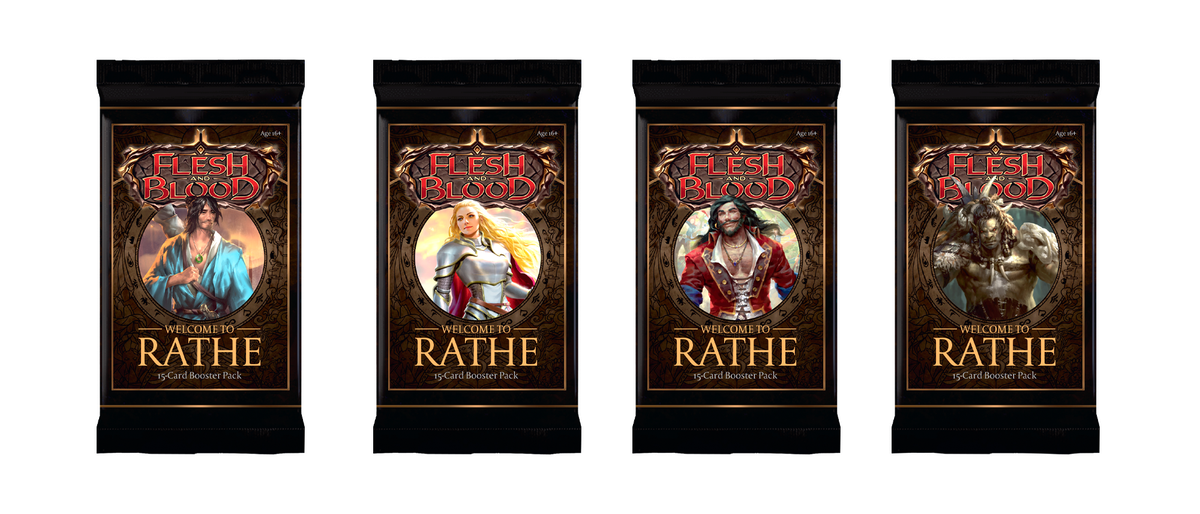
Getting Started in FaB Finance
The sections below each address a basic element of FAB finance in a few paragraphs. We’ll start with helping you define your goals and then examine some common topics that can be confusing for those new to the world of CCGs. These sections are designed to be a quick high-level look at some salient issues. Most of these topics have enough depth that they could easily provide material for an entire article or series of articles, but the overviews should provide you with enough of a base that you’ll feel more comfortable seeking out additional information.
Who Are You?
No, not literally; I’m asking about your identity in relation to the financial end of FAB. I like to conceptualize approaches to FAB finance in three broad categories: investing, collecting, and playing. Investing is buying product for the express purpose of making profit, often years down the road, although this category can also include speculating on and flipping product in a shorter timeframe for more modest gains. Collecting is exactly what it sounds like: accumulating a collection of cards. How any individual person approaches collecting is going to vary significantly. Some people might be interested in cold foils generally, while others might just want to collect a ton of Cracked Baubles. Playing is a pretty self-evident category. Significantly, your personal approach can belong to multiple categories – if, for instance, you really like to play with premium versions of cards, you’re embodying both player and collector sensibilities. So, what do you want to do with this game? What’s most important to you?
While the investment end of FAB is certainly white hot at the moment, you shouldn’t feel bad if your chief interest is amassing an awesome collection of cold foils to display or blinging out your CC deck.
The reason I like to start with this self-assessment is that it helps structure how you make financial decisions. While the investment end of FAB is certainly white hot at the moment, you shouldn’t feel bad if your chief interest is amassing an awesome collection of cold foils to display or blinging out your CC deck. As an example, if you want to play the game (and you should –it’s a very good game) but investment is your top priority, you might elect to keep all of your first edition boxes sealed because they’re the product that will most consistently yield the highest returns. You might instead opt to play with cheaper unlimited edition cards. For most people involved with the hobby, money is going to be a limiting factor. You won’t be able to own absolutely everything you could ever want, so taking a little bit of time to determine what your top priorities are will help you to make choices that optimize your spending and prevent you from making spur of the moment decisions that you’ll come to regret later. I’ve seen many a sad post from people who bought an expensive first edition box as an investment that they ultimately ended up opening and losing a lot of money on because, deep down, what they really wanted was a collection of cold foils. If these people had accurately assessed their interested, they might have realized that they were better off just buying a couple cold foils as singles.
Stable FAB Investments
If you’re looking into buying FAB product for the purpose of making money, the most dependable purchase is sealed first edition boxes. As of right now, these can all be expected to continue to accrue steady value for as long as the game is healthy. Thus far, all first edition boxes have gone on to significantly more than double their MSRP in a year or less. Monarch, the next set to be released, is already pre-ordering for about double its MSRP, so it’s safe to say that this trend will continue in the short term. However, as future first edition print runs grow, we can expect these boxes to accrue value at a slower pace. Unless LSS changes how they release product, first edition will remain a good long term investment, but with each set that’s released, we should assume that the speed at which we see value spikes will be reduced.
Cold foils, specifically cold foils that come from booster packs, are the most reliably investable singles. The exclusivity of these cards means that they will remain rare and desirable for the foreseeable future. One thing to be aware of is that cold foil promotional cards do not carry the same promise of not being reprinted. In fact, LSS recently clarified their policy on cold foils, stating that “once a card has been printed as a First Edition Cold Foil, it will never be printed as a cold foil again, with the exception of the Cold Foil Prize Card clause of this policy.” The policy for prize cards notes that they “will be visually differentiated from [their] original printing.” With all of this in mind, promotional cold foils are generally a higher risk investment, and I personally only recommend buying them if you want them for collection or play purposes. While they can certainly yield profits as an investment, they are relatively high risk compared to other more reliable options.
Cold foils, specifically cold foils that come from booster packs, are the most reliably investable singles.
Finally, when looking at singles for reliable investments, good generic cards are often more valuable and dependable than class-specific or character-specific cards. Due to the “retirement” system that removes heroes that win ten qualifying events from the legal pool of cards for competitive play, it is possible that some cards that are very good in a specific character’s deck may lose significant value if and when that hero is retired. We’ve yet to see any hero be retired, so the implications for the market are all theoretical right now, but good generics have the benefit of potentially being played in any deck, so a single retirement likely won’t affect their price unless they were only used by the retired hero.
Why are Sealed Boxes More Valuable than their Contents?
In CCGs, investable items mostly fall into two classes: sealed product and singles. Sealed product, on average, will accrue value at a better rate than the average single, but singles have the benefit of being able to be used to actually play the game and can be sold later to buy other cards, recover some of your initial investment, or even make a profit. There will sometimes be individual cards that emerge and outperform sealed boxes, but these are difficult to predict. In CCGs, the most dramatic gains to be made from singles are cards that were initially considered bad that suddenly become good in the context of new cards or cards that the playerbase realizes they’ve misevaluated after a new deck utilizes the “bad card” to great success.
A common question asked by people who are new to the financial end of CCGs is, “Why does this box cost so much more than the cards it’s likely to contain?” At first glance, the existence of a box of cards that costs a thousand dollars and will, on average, have three hundred dollars’ worth of cards inside it might not make much sense. However, there are a couple reasons for this phenomenon. First, sealed product, especially when it’s out of print, is best thought of as a collectible in its own right. Second, sealed product can become single cards, but single cards cannot become sealed product. What this means is that, over time, sealed boxes become increasingly rare. The longer a set is out of print, the fewer sealed boxes that remain, and the more detached the box price will become from the price of singles. For early Flesh and Blood sets, this detachment has happened very quickly due to small print runs. WTR is worth a lot more as a sealed product than the vast majority of boxes will yield if opened. As print runs grow, the timeline for this decoupling will become more protracted, potentially taking years for the EV of a box to significantly separate from the price of a sealed box.
The longer a set is out of print, the fewer sealed boxes that remain, and the more detached the box price will become from the price of singles.
As a corollary to the previous point, if a set is in print, the price of a sealed box imposes a sort of ceiling on the EV of the box. If the EV ever exceeds the price of a sealed box, the market will adjust to compensate, usually by driving singles prices down. This happens because, when a box is readily available, you can simply open them in large quantities and sell the singles for a profit. As this happens, the value of singles is diluted. This movement is contingent on supply being readily available, something that hasn’t happened with FAB since the initial spike in the secondary market in August 2020. However it is likely that the supply on unlimited sets will eventually catch up with demand, though probably not until late 2021 or 2022.
It’s worth being aware that some people value a sealed case of four booster boxes at a premium over four individual sealed booster boxes. This is partially due to the perception that one has a better chance of opening a Legendary from four boxes in the same case as opposed to four random boxes (we’re not going to get into the validity of that belief; what’s important is that a non-insignificant number of people believe it). Personally, I only leave cases sealed if I’m buying them directly from a trusted store. I open any cases I buy on the secondary market to confirm their contents. How you handle this personally is up to you, but you’ll need to balance the potential for a reduced premium against the chance of someone selling you a case that’s been tampered with and not finding out until years later when you have no recourse.
Storing Your Cards
While it might not occur to you at first, how you store and maintain your cards is actually quite important, particularly in regard to foils, which can curl if not handled properly. For our purposes, we’re going to focus on storing individual valuable cards as opposed to your collection as a whole. The highest reasonable level of protection for a single card is in a graded case. Slabbed cards need to be tremendously mishandled to receive damage. Slabs are secure enough that you’ll often see collectors using them as coaster as a joke (I wouldn’t do it personally; I’m paranoid). If you’re not grading cards, or if you want to use your valuable cards for play, you should double sleeve your cards using a “perfect fit” inner sleeve (Dragon Shield and KMC are the most popular brands) placed inside an outer sleeve (Again Dragon Shield and KMC are popular choices, as are Ultimate Guard’s Katana line).
Once double sleeved, you can store your cards in a portfolio or binder. My personal preference is portfolios, such as those made by Dragon Shield which don’t include metal rings. If handled improperly, binders with rings can pinch cards, leaving indentations on their surface and reducing their value. If you’re set on rings, get a binder with D-rings as opposed to O-rings. Some people like to store single cards in “one-touch” magnetic cases, which mimic some of the functionality of a graded slab. I don’t like these personally, as I find them to be a bit fiddly and difficult to put cards in or remove them from. You might consider them if you plan to store a card in the case permanently without taking it in and out, though in that situation, you should also think about if grading is a better solution. Speaking of slabs, the slab equivalent for sealed boxes is acrylic cases. The main seller of these is Graded Power, which now stocks cases specifically for FAB. These can be quite pricy, so they’re likely only worth considering for high value boxes like WTR alpha or first edition ARC. As a word of advice, FAB boxes produced thus far have been somewhat delicate, and stacks of sealed boxes that aren’t in either sealed cases or their own individual acrylic cases should be limited to 3 or four boxes high. If you go much beyond that, the bottom boxes can exhibit compression damage over time.
While it might not occur to you at first, how you store and maintain your cards is actually quite important, particularly in regard to foils.
Two other factors to consider are light and humidity. Exposure to light, particularly sunlight, will fade color overtime, so if you display your high end singles and/or boxes, you should make sure they are located safely out of direct sunlight. Humidity can cause cards to warp or bend; rainbow foils, in particular, are sensitive to humidity-related damage. The best way to avoid curling is to store cards sleeved and in a binder or case, or for less valuable foils, sleeved and packed snugly into a cardboard storage box. Silica packets can also be stored alongside foils to help reduce humidity around your cards. Curled cards can often be pressed back into shape, but it’s best to avoid the situation as much as possible with good storage practices.
Things to Avoid
While FAB has been a veritable gold mine in the past year, there are a couple things that you should avoid if your focus is making money. The number one thing to avoid is unlimited edition sealed product and singles. Right now, constrained supply has resulted in somewhat inflated prices for both unlimited singles and sealed product. Unlimited boxes are usually selling for over MSRP as opposed to at or below MAP, which is the price one would expect to pay if boxes were plentiful. If you want to play the game right now, you’re going to have to shoulder these prices as a cost of entry, but it’s very likely that the current prices will go down over time when LSS eventually catches up on printing, so don’t pick these up as investments.
I mentioned this earlier, but promotional cards are a risky investment, and the other major class of card I would avoid if you’re seeking profits. The fact that these can be reprinted makes any individual card’s value very vulnerable to dramatic downward movement. As an example, rainbow foil Adult ARC heroes were once worth around $300 each. Then a large quantity were released as BaBs with unlimited edition and as parts of various CFB bundles. Today these cards sell for about $60-75 each. So, while they certainly aren’t worthless, they lost an incredible amount of their value as more entered the market, and there’s no guarantee we won’t see another wave of them distributed in the future.
Unlimited edition product and promotional cards are a risky investment.
Closing Thoughts
Phew! I’m sure that was a lot to take in, so thanks for sticking around until the end. As I said when we started, this is a sort of initial look at these topics. All of them can be explored in much more depth, and you’ll doubtlessly have more questions as you continue to build your cardboard empire. Fortunately, the FAB community is usually willing to help people out. Some resources you might consider are the Rathe Times Discord, the #wall-street channel of the main FAB Discord (Note: you’ll need to read and agree to the rules in #read-before-use before the Marketplace channels will be accessible), and the “Flesh and Blood NA References and Market Discussion Page” on Facebook (you don’t have to be in NA to participate). With that, I’ll bid you adieu and hope to see you in a couple weeks for the State of the Market.




